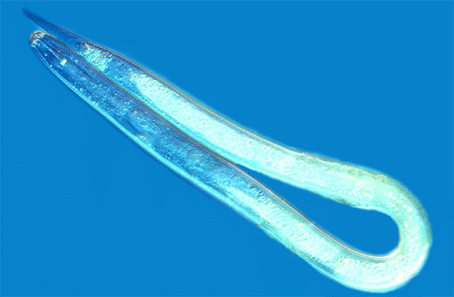A U.S. Department of Agriculture (USDA) scientist has created a new weapon in the war being waged against the potato cyst nematode-a diagnostic test that identifies the type of nematode infesting a grower's field.
Xiaohong Wang, a molecular biologist with the Agricultural Research Service (ARS) Robert W. Holley Center for Agriculture and Health in Ithaca, N.Y., has filed a patent application on the monitoring tool, developed in part by cloning and sequencing key genes. ARS is USDA's principal intramural scientific research agency. This research supports the USDA priorities of ensuring food safety and promoting international food security.
There are two types of potato cyst nematode (PCN), the golden nematode and the pale cyst nematode. Being able to tell one from the other is important because breeders have developed potatoes that can resist the golden nematode, but have yet to develop varieties that resist the pale cyst nematode. If the pale cyst nematode is found in a field, potatoes cannot be grown there.
The golden nematode (Globodera rostochiensis) has been a problem in New York State since 1941 and has been found in Canada. The pale cyst nematode (G. pallida) was discovered in Idaho in 2006 and remains a major threat in Europe. Potatoes and seed potatoes are freely exchanged across international boundaries, so monitoring potato growing regions is essential.
The researchers then sequenced those chorismate mutase genes, compared the sequences, and identified unique regions in each sequence. They then developed a probe capable of recognizing the unique regions in each nematode's DNA. Wang described the process in a paper in the European Journal of Plant Pathology.
The diagnostic test is one of several new technologies designed to distinguish PCN types from each other, but it is a thousand times more sensitive than other systems and is expected to be widely used in regulatory and quarantine programs because it can give reliable results from tiny amounts of nematode material.











